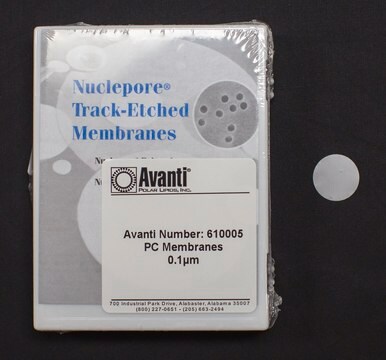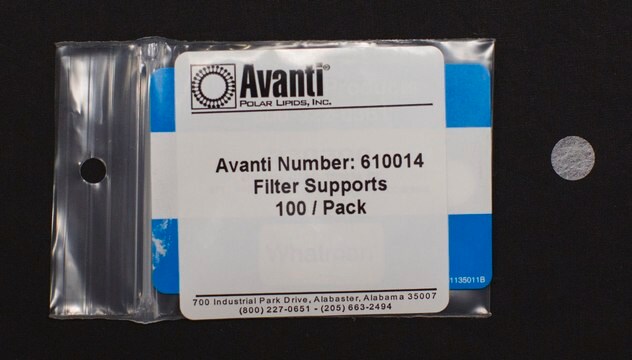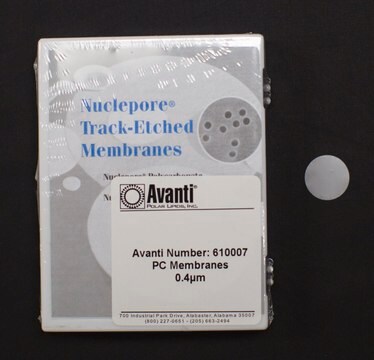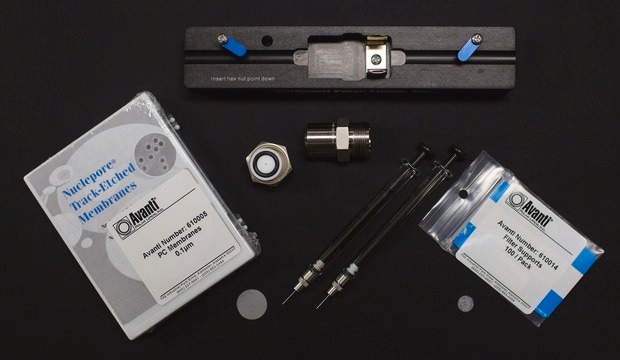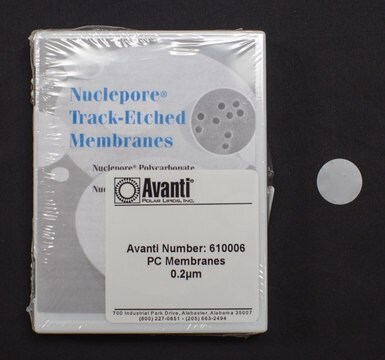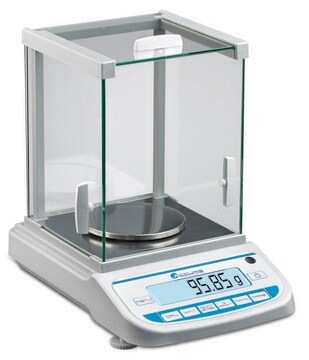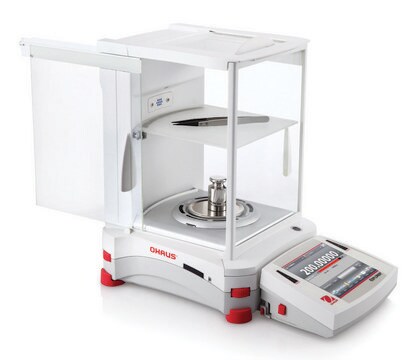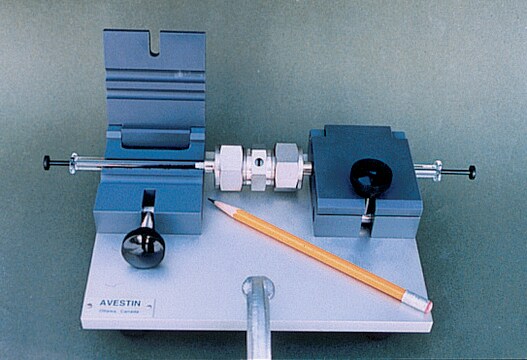WHA10417104
Whatman® polycarbonate Nuclepore filter discs 0.4 μm pore size
hydrophilic, track-etched, treated with PVP, 100 ea, 19 mm diam
Synonym(s):
Nuclepore Membrane, Track-Etched Membrane
About This Item
Recommended Products
product name
Whatman® Nuclepore™ Track-Etched Membranes, diam. (19 mm), pore size 0.4 μm, polycarbonate, pack of 100 ea
material
polycarbonate
sterility
non-sterile
packaging
pack of 100 ea
manufacturer/tradename
Cytiva
Whatman 10417104
diam.
(19 mm)
pore size
0.4 μm pore size
Looking for similar products? Visit Product Comparison Guide
Application
- Epifluorescence microscopy
- Environmental analysis
- Cell biologyEPA testing
- Fuel testing
- Bioassays
- Parasitology
- Air analysis
- Water microbiology
Features and Benefits
- Track-etched for highly defined pore size and high pore density
- Treated with polyvinylpyrrolidone (PVP) to render it hydrophilic
- Low extractables, minimizing filtration sample contamination risk
- High chemical resistance and good thermal stability for a wide range of sample types
- Low, consistent ash and low tare weights
- Smooth flat membrane surface for high particle visibility
Legal Information
Choose from one of the most recent versions:
Certificates of Analysis (COA)
Sorry, we don't have COAs for this product available online at this time.
If you need assistance, please contact Customer Support.
Already Own This Product?
Find documentation for the products that you have recently purchased in the Document Library.
Our team of scientists has experience in all areas of research including Life Science, Material Science, Chemical Synthesis, Chromatography, Analytical and many others.
Contact Technical Service